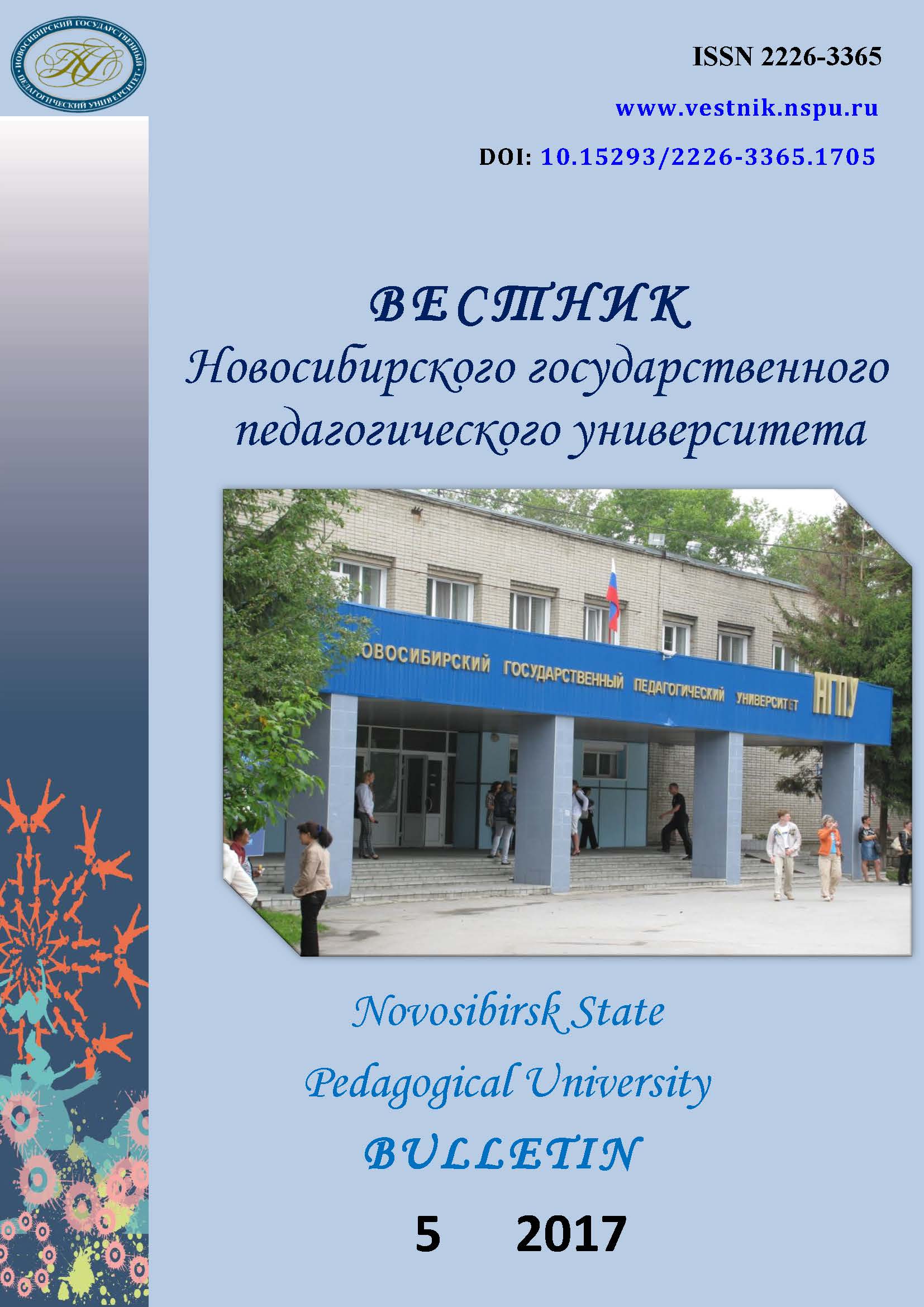Особенности онтогенеза речевой деятельности
у мальчиков школьного возраста с эссенциальной артериальной гипертензией
Features of speech ontogenesis in male schoolchildren with essential hypertension
Author(s): Vladimir Matveevich Polyakov, Zhanna Vladimirovna Prokhorova, Olga Nikolaevna Berdina, Anastasiya Sergeevna Domashenkina, Irina Vladilenovna Yaroslavtseva, Ekaterina Stanislavovna Lutoshliva, Lyubov Vladimirovna Rychkova, Nina Igorevna Aizman, Sergey Ivanovich KolesnikovSubject(s): School education, Health and medicine and law, Sociology of Education
Published by: Новосибирский государственный педагогический университет
Keywords: Adolescence; Male; Essential hypertension; Cognitive disorders; Speech function; School ontogenesis; Neuropsychological tests
Summary/Abstract: Introduction. The problem of higher mental functions formation in the conditions of a chronic disease becomes particularly relevant in the adolescence, especially in males, who are particularly vulnerable for cardiovascular pathology and cognitive disorders. The purpose of the article is to identify the dynamics of speech ontogenesis in 5–11-grade male schoolchildren with essential hypertension (EH) as the basis for differentiated approaches to learning. Materials and Methods. Two groups of 5–11 grade male schoolchildren (basic group, BG – 59 individuals; control group, CG – 60 individuals) were examined. BG included adolescents with a verified diagnosis of EH, CG consisted of healthy adolescents. All subjects of both BG and CG were divided into three age subgroups, taking into account the stages of ontogenesis: participants aged between 10 and 12, 13 and 15, and 16 and 18. All the participants were assessed by neuropsychological testing. The state of the speech function was studied using the associative test and the technique of "Storytelling". Results. A comparative analysis of the speech development dynamics in the ontogenetic aspect revealed a number of features in EH male schoolchildren, reflecting the interrelationship of violations of higher mental functions formation with disease duration. 10–12-year-old boys with EH did not significantly differ from CG boys in the number of actualized words and the formation of semantic groups. It was only statistical trend in the analyzing the productivity of associations: fewer words and nests were detected in the BG. In the Participants aged between 13 and 15 demonstrate the following trend: the productivity of associations in the BG and CG began to differ at the level of statistical reliability in all studied indicators. In the older group of male schoolchildren differences between EH patients and healthy adolescents became even more significant. Such a discrepancy in the performance of the speech test was associated with a "spasmodic" improvement in the parameters under study in the process of ontogenesis in healthy schoolchildren and their subtle dynamics in male adolescents with EH, with the exception of the positive dynamics in the results of the associative test in male schoolchildren of the younger and middle age subgroups. Conclusion. EH male schoolchildren have a consistent retardation of the rate of speech development with a constant increase in the lag of the CG within school ontogenesis. It is confirmed by lower values of neuropsychological tests indices. The results confirm the need for a differentiated approach in the development of scientifically based approaches to the diagnosis, prevention and treating EH, as well as the development of specialized educational and training programs for such schoolchildren.
Journal: Вестник Новосибирского государственного педагогического университета
- Issue Year: 7/2017
- Issue No: 5
- Page Range: 112-126
- Page Count: 15
- Language: Russian

